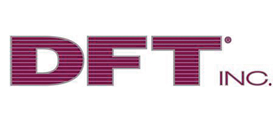DFT Sanitary Valves | DFT Sanitary Check Valves
Carotek.com displays pricing in accordance with our manufacturer’s internet pricing policies. Contact us for volume discounts and quotes.
 Images are representative only - actual product may differ
Images are representative only - actual product may differPart #DFT-SNTRY
Brand : DFT Valves
States : GA, NC, SC, TN, VA
DFT 3-A Certified Valves prevent flow reversal in systems, complying with the most stringent cleanliness codes across a variety of industries.
- Details
- Industry / Applications
- Documents
DFT 3-A Certified Sanitary Valves
Our DSV® Check Valves prevent flow reversal in systems, complying with the most stringent cleanliness codes across a variety of industries. Other features of the DSV® Check Valve include:
Why use a Sanitary Check Valve?
Sanitary check valves prevent liquid backflow during manufacturing processes that involve the passage of fluids between systems. In particular, spring-check valves help maintain closure pressure to create a positive shutoff.
DFT® offers a full range of sanitary check valves for a diverse array of industrial applications. All DSV® in-line spring-assisted check valves are certified 3A standard 58-02, and are designed for industries that abide by strict sanitary codes. We build our valves with quick, easy, and reliable flow reversal in mind.
DSV® valves come in many sizes to meet the needs of most piping arrangements. We build valves from 0.5” to 4” line size, and our products can meet vertical or horizontal specifications as required.
DSV® valves come with a certified Clean-in-Place design. Featuring a 316L stainless steel body and seat, the DSV is fastened to valves using a quick-release clamp and elastomeric body seal. In order to provide superior shutoff capability, the disc and seat have also been lapped.
Failing to maintain sanitary conditions in the Food & Beverage industry can have devastating results. Using a check valve to prevent flow reversal is one way to prevent product contamination and recalls as well as protect consumers and the company reputation.
DFT has a great 3A certified check valve that is designed without crevices or cavities which is where biological build up often occurs. It has highly polished internal features that make bacterial growth difficult, promotes self-cleaning and is certified “Clean In Place.”
Gas transmission
Petroleum production and refining
Power generation
Textiles
DFT® sanitary check valves are 3-A certified and appear across a range of high-profile industries. For example, pharmaceutical, chemical, beverage/beer, food, dairy, and cheese manufacturers use DFT® products because their high quality ensures that the valves can be thoroughly cleaned, in turn making their products stay fresher for longer.
We design our valves without crevices or cavities, which are known to cause bacteriological buildup within the valves. Because of our check valve’s smooth, highly polished internal and external design, a variety of prominent companies use our products for applications ranging from pharmaceuticals to dish detergent.
Our check valves’ highly polished internal features make it difficult for bacteria to embed in very tiny areas that otherwise might provide ideal environments for them to multiply and thrive. DFT® has designed the internal features of the valve to promote self cleaning and allow our products to be certified “Clean In Place.” This key quality renders our product superior to other spring operated axial flow valves, whose reliance on complex internal components increases the risk of both contamination and equipment failure.

